What Are The Harmful Exhaust Emissions?
The bad part of vehicles is air pollution. Internal Combustion engines are operated by diesel and petrol fuels, generating polluted harmful air which affects the atmosphere. These harmful gases are the major reasons for global warming, acid rain, and health hazards. Do you want to know what are the harmful exhaust emissions? Well, let us explain to you in detail what emissions come from exhaust.
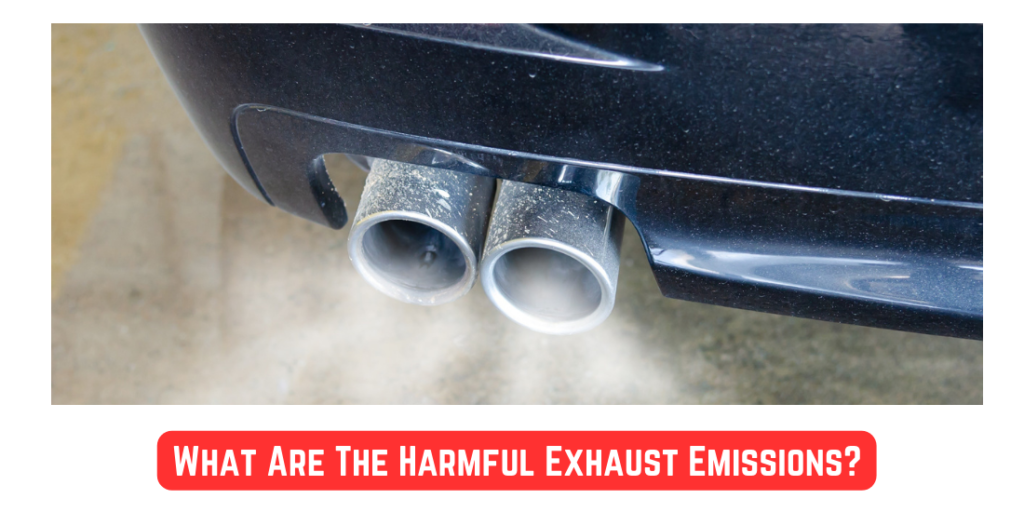
Why Do Automobiles Produce Harmful Pollutants?

Pollutants are the bi-product of fuel combustion. But when there is a malfunction in the combustion chamber it produces excessive pollutants which affect the environment badly. Incomplete combustion, leakage in the combustion chambers, and faulty valves are the major reasons for producing harmful pollutants.
What Are The Harmful Exhaust Emissions?
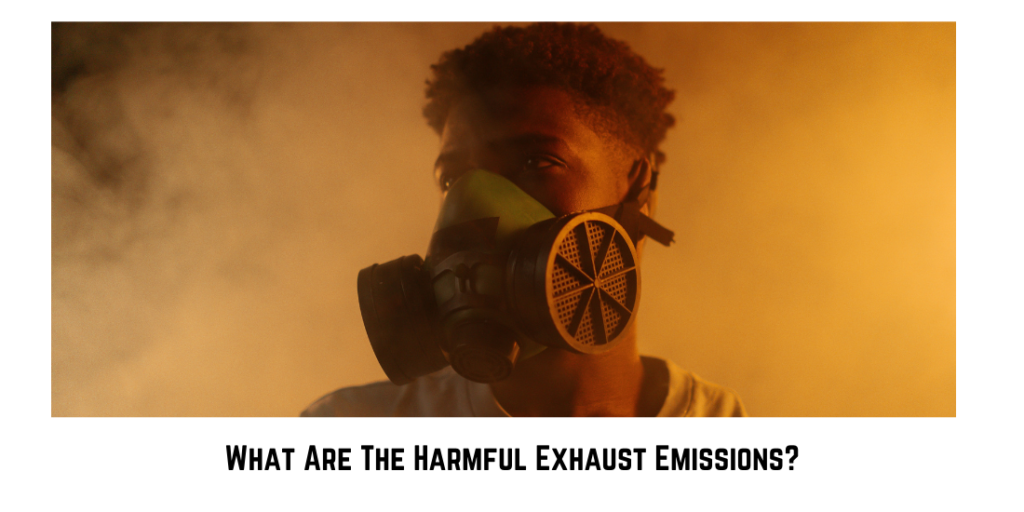
High-temperature combustion major harmful exhaust emissions are unburnt hydrocarbons, oxides of carbon, oxides of nitrogen, oxides of sulphur, soot, and smoke.
Internal combustion engines are classified into 2 types depending on the type of fuel used.
- Petrol Engines
- Diesel Engines
Now these engines produce different amounts and ratios of harmful exhaust emissions. Let us discuss them one by one.
Harmful Exhaust Emissions By Petrol Engines
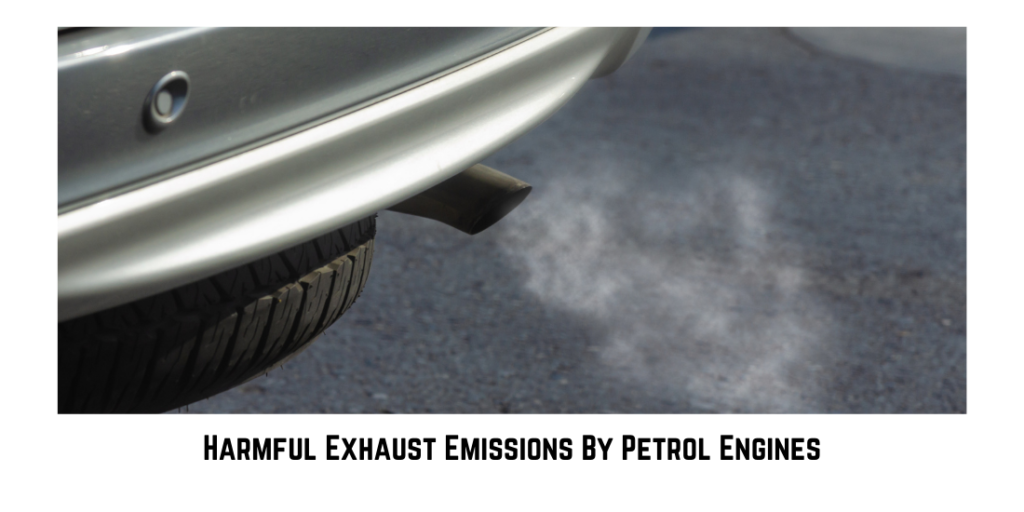
The major contents of the harmful exhaust emission of petrol are as below. And As we mentioned earlier the amount of harmful exhaust emission depends on the improper combustion and air-fuel intake.
- Unburnt Hydrocarbon( Hc)
- Oxides Of Carbon (CO) (CO2)
- Oxides Of Nitrogen (NO) (NO2)
- Aldehydes
- Sulphur, Lead And Phosphorous
Unburnt Hydrocarbons (HC):
- The unburnt hydrocarbons are the major component of harmful exhaust emissions. These gases are toxic and affect the human and animal respiratory system.
- The quantity of the hydrocarbon emission depends on the condition of the combustion chamber and the combination of the air-fuel mixture.
- The approximate amount may vary from 1-1.5% of the fuel quantity.
Oxides Of Carbon (CO) (CO2):
- Carbon monoxide and carbon dioxide is another major component of harmful exhaust emissions. Inefficient combustion due to lack of oxygen, unburnt fuel ended as carbon monoxide (CO) and carbon dioxide (CO2). This CO and CO2 is undesirable and harmful to the environment.
- Petrol engines may produce 0.3 to 5% carbon monoxide depending on the level of combustion.
Oxides of Nitrogen (NO) (NO2):
- Oxides of nitrogen are created from nitrogen in the air. At high-temperature combustion, nitrogen breaks and reacts with oxygen to form nitric oxide and nitrogen dioxide.
- The quantity of nitric oxide and nitrogen dioxide emission is depending on the air-fuel mixture.
Aldehydes:
- Aldehydes are emitted into the atmosphere by petrol combustion engines.
- Aldehydes are highly unhealthy and develop a risk of respiratory cancers and cardiovascular diseases.
Sulphur, Lead and Phosphorous:
- Along with the major constituents mentioned above, harmful exhaust emissions have traces of sulphur, lead and phosphorous.
Harmful Exhaust Emissions By Diesel Engines
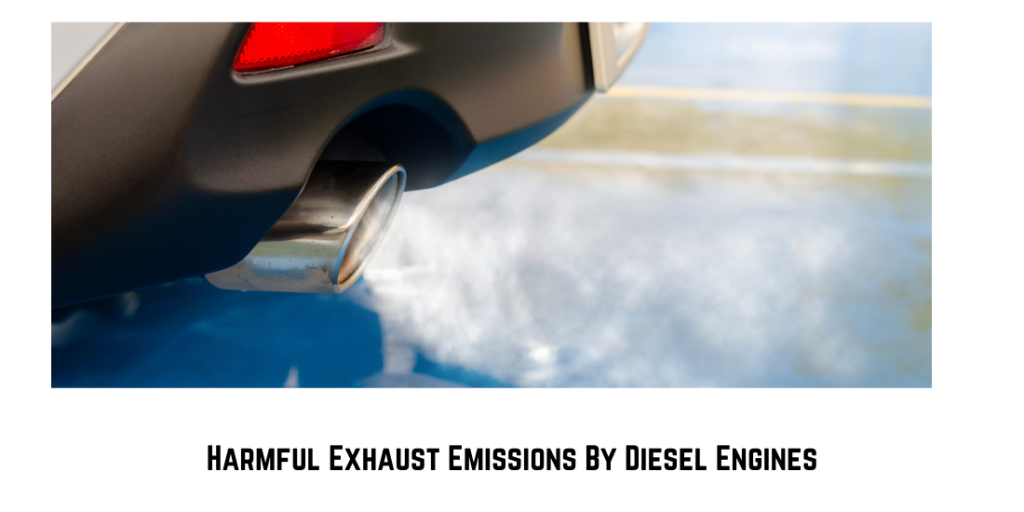
Pollutant emissions by diesel engines are similar to petrol engines but in different amounts. Older diesel vehicles produce maximum pollutants that cause air pollution. Harmful exhaust emissions by diesel engines are as below.
- Unburnt Hydrocarbon( HC)
- Oxides Of Carbon (CO) (CO2)
- Oxides of Nitrogen (NO) (NO2)
- Smog and Soot
Unburnt Hydrocarbons (HC):
- The hydrocarbon emission of compression ignition engines or diesel engines is comparatively lesser than the of petrol engines.
- The diesel engine produces only 20% of the hydrocarbon produced by a petrol engine.
Oxides Of Carbon (CO) (CO2):
- Oxides Of Carbon (CO) (CO2) are the major pollutants in the diesel engine and it depends on the running of the engine and diesel intake.
Oxides of Nitrogen (NO) (NO2):
- Diesel engines operate at higher temperatures and nitrogen brakes react with oxygen at a higher level producing a large amount of nitric oxide and nitrogen dioxide
Smog and Soot:
- Due to excessive oxides of nitrogen diesel engines produce smog and solid soot. These are very toxic and hazardous to the atmosphere.
Harmful Exhaust Emissions
| Harmful Exhaust Emissions By Petrol Engines | Harmful Exhaust Emissions By Diesel Engines |
| Unburnt Hydrocarbons (HC) | Unburnt Hydrocarbons (HC) |
| Oxides Of Carbon (CO) (CO2) | Oxides Of Carbon (CO) (CO2) |
| Oxides of Nitrogen (NO) (NO2) | Oxides of Nitrogen (NO) (NO2) |
| Smog and Soot | Smog and Soot |
| Aldehydes, Sulphur, Lead and Phosphorous |
How to reduce the Harmful Exhaust Emissions from the Car?
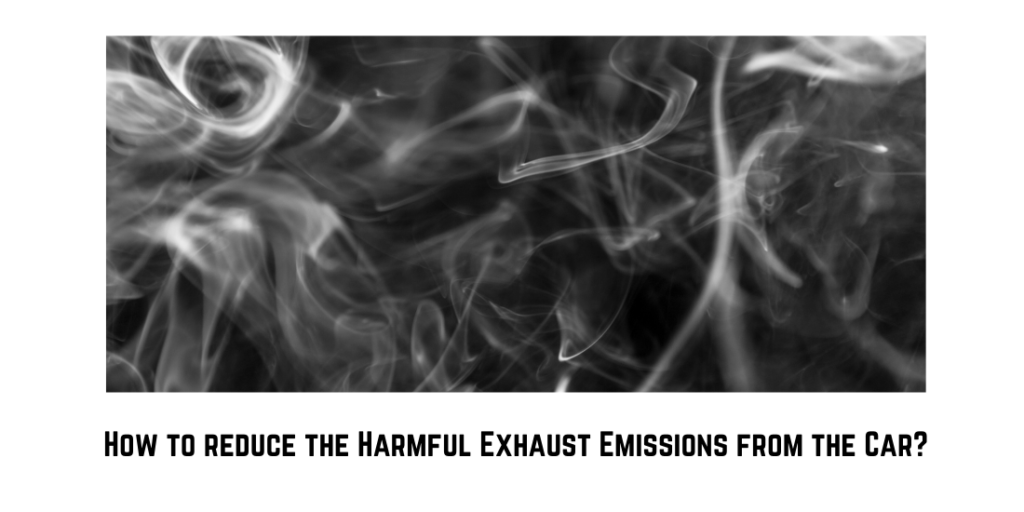
Optimize The Engine Refinement
A major reason for harmful exhaust emissions is improper combustion. Make sure your car engine is refined enough to draw the exact air-fuel mixture and combust properly. This will reduce the pollutants emission.
Replacing The Fuel Filter And Air Filter
Make sure you change your fuel and air filter as per the service schedule so that the combustion chamber draws clean and fresh air-fuel mixtures.
Checking Spark Plug Condition
The sparkplug condition is very important for efficient combustion to take place. Keep checking the efficiency of the spark plug and replace it as per the condition.
Use Quality Fuel
Fuel is the major component of the combustion process. Use good quality fuel that assures clean and complete combustion reducing the emission of pollutants.
Tuning The Idle
Your car emits harmful gases even when the engine is idle running. Tune your idle acceleration accurately to avoid unnecessary high RPM operation.
Conclusion:
Unburnt Hydrocarbon( HC), Oxides Of Carbon (CO) (CO2), Oxides of Nitrogen (NO) (NO2), Aldehydes, Sulphur, Lead And Phosphorous, Smog and Soot are the harmful exhaust emissions. These harmful gases are hazardous to the whole atmosphere including humans and animals. If you have any queries please do comment.






